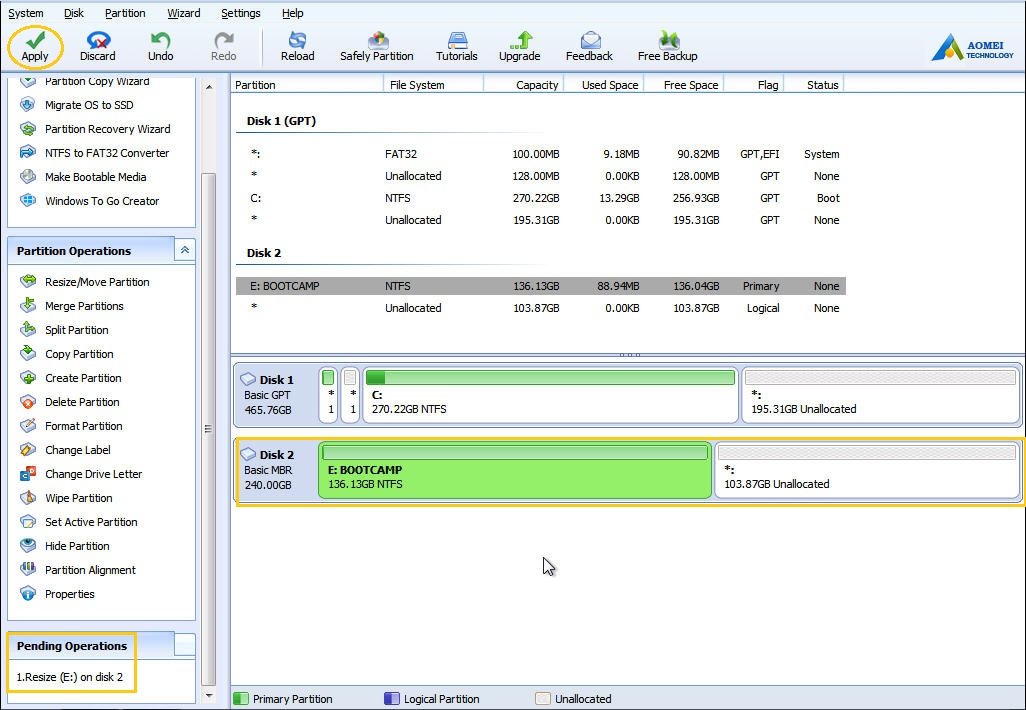
 Manually download FUSE-EXT2 from or for Sierra/El Capitan from and run the PKG installer. IMPORTANT: Once you launch the PKG installer, make sure you selected MacFUSE Compatibility Layer in the wizard (it is not enabled by default) - without it I was getting an error while trying to mount. Manually downloading and installing the OSXFUSE DMG from. The homebrew formulas for OSXFUSE and FUSE-EXT2 did not work for me on either mavericks or yosemite. T*wo packages are needed in order to enable EXT2/3/4 support on OSX: OSXFUSE and FUSE-EXT2. Original answer for Yosemite and older *(deprecated) If you happen to have files owned by _lpoperator (apparently they are created when you use rsync with preserve group option), then the following command will allow accessing those files: /usr/sbin/dseditgroup -o edit -a everyone -t group _lpoperator diskutil umount /dev/disk2s1 - if you get a message that unmounting failed then you can force unmounting with diskutil umount force /dev/disk2s1, although it would be cleaner to close the apps that are using the files on the disk and retry unmounting without force. Sudo ext4fuse -o allow_other /dev/$disk_id $'" Read -p "Please type the EXT4 device identifier: " disk_id When launched it will automatically create the mount point after you'll be prompted to enter one of the displayed device identifiers such as disk2s1: diskutil list Here is a bash script which partially automates the process.
Manually download FUSE-EXT2 from or for Sierra/El Capitan from and run the PKG installer. IMPORTANT: Once you launch the PKG installer, make sure you selected MacFUSE Compatibility Layer in the wizard (it is not enabled by default) - without it I was getting an error while trying to mount. Manually downloading and installing the OSXFUSE DMG from. The homebrew formulas for OSXFUSE and FUSE-EXT2 did not work for me on either mavericks or yosemite. T*wo packages are needed in order to enable EXT2/3/4 support on OSX: OSXFUSE and FUSE-EXT2. Original answer for Yosemite and older *(deprecated) If you happen to have files owned by _lpoperator (apparently they are created when you use rsync with preserve group option), then the following command will allow accessing those files: /usr/sbin/dseditgroup -o edit -a everyone -t group _lpoperator diskutil umount /dev/disk2s1 - if you get a message that unmounting failed then you can force unmounting with diskutil umount force /dev/disk2s1, although it would be cleaner to close the apps that are using the files on the disk and retry unmounting without force. Sudo ext4fuse -o allow_other /dev/$disk_id $'" Read -p "Please type the EXT4 device identifier: " disk_id When launched it will automatically create the mount point after you'll be prompted to enter one of the displayed device identifiers such as disk2s1: diskutil list Here is a bash script which partially automates the process. 
You can mount as a normal user but in that case you'll only be able access world-readable files, that's why for full access you need to use sudo, e.g.: sudo ext4fuse -o allow_other /dev/disk2s1 Install ext4fuse with: brew install ext4fuse

While other answers already give some usage examples I'll repeat it once again with some important details:

Updated answer for (High) Sierra and more recent MacOS versionsįor Sierra and High Sierra ext4fuse seems to work well for read access only and therefore it could probably be considered the preferred option.








 0 kommentar(er)
0 kommentar(er)
